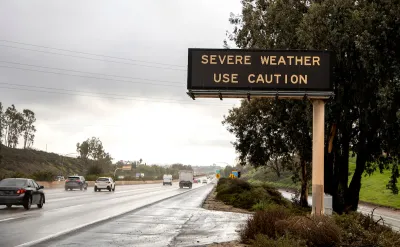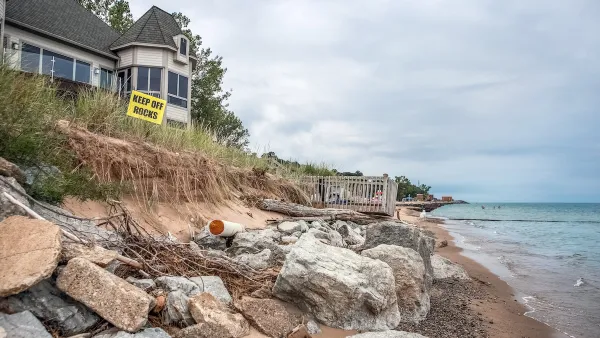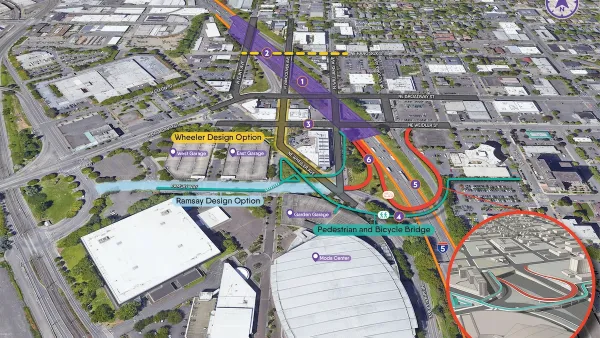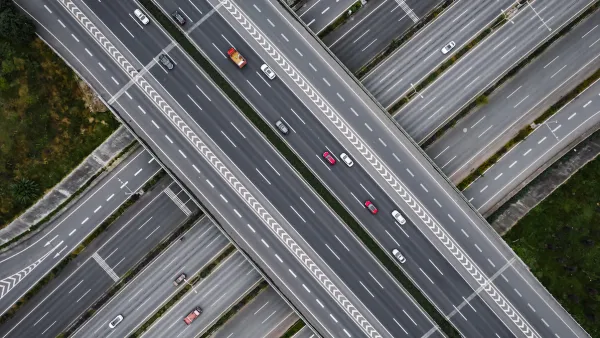In addition to displacement and public health impacts, highway expansions can also make communities less resilient to flooding and other climate-related disasters.

In a blog post for Transportation for America, Mehr Mukhtar describes how the U.S. Interstate Highway System has negatively impacted communities. “These legacies are not abstract; they have tangible effects in terms of pollution, population displacement, and environmental degradation,” Mukhtar writes.
To illustrate the point, Mukhtar uses the case of Shiloh, Alabama, a predominantly Black rural community where the expansion of a local highway led to increased flooding impacts. “Flooding has affected the structural integrity of homes and is raising alarming health concerns with residents reporting the appearance of mold. Physical damages and rising maintenance issues have forced the Shiloh community to contend with the difficult reality of investing in expensive repair projects or leaving their homes.”
Shiloh, like other communities, has been fighting for recognition and resources using tools like the National Environmental Policy Act (NEPA). In the case of Shiloh, “Their efforts culminated in an ongoing civil rights investigation from the Federal Highway Administration (FHWA) and a visit from the U.S. Secretary of Transportation Pete Buttigieg in early April of this year. But so far, no real relief has been found.”
Now, funding from programs like Reconnecting Communities must be used strategically to begin redressing historical harms. According to Mukhtar, “Funding is being moved towards emissions-increasing roadway widenings at a critical moment in the climate crisis when our dollars should be spent towards robust public and alternative transportation options. Our transportation system is steeped in environmental racism and continues to function as a driver of inequality.”
FULL STORY: There’s a climate cost to America’s freeways, and it’s not paid equally

National Parks Layoffs Will Cause Communities to Lose Billions
Thousands of essential park workers were laid off this week, just before the busy spring break season.

Retro-silient?: America’s First “Eco-burb,” The Woodlands Turns 50
A master-planned community north of Houston offers lessons on green infrastructure and resilient design, but falls short of its founder’s lofty affordability and walkability goals.

Delivering for America Plan Will Downgrade Mail Service in at Least 49.5 Percent of Zip Codes
Republican and Democrat lawmakers criticize the plan for its disproportionate negative impact on rural communities.

Test News Post 1
This is a summary

Test News Headline 46
Test for the image on the front page.

Balancing Bombs and Butterflies: How the National Guard Protects a Rare Species
The National Guard at Fort Indiantown Gap uses GIS technology and land management strategies to balance military training with conservation efforts, ensuring the survival of the rare eastern regal fritillary butterfly.
Urban Design for Planners 1: Software Tools
This six-course series explores essential urban design concepts using open source software and equips planners with the tools they need to participate fully in the urban design process.
Planning for Universal Design
Learn the tools for implementing Universal Design in planning regulations.
EMC Planning Group, Inc.
Planetizen
Planetizen
Mpact (formerly Rail~Volution)
Great Falls Development Authority, Inc.
HUDs Office of Policy Development and Research
NYU Wagner Graduate School of Public Service





























